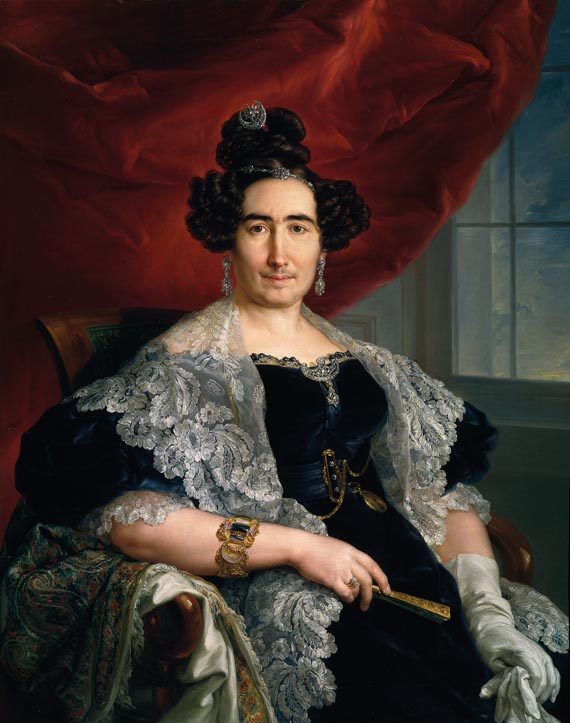
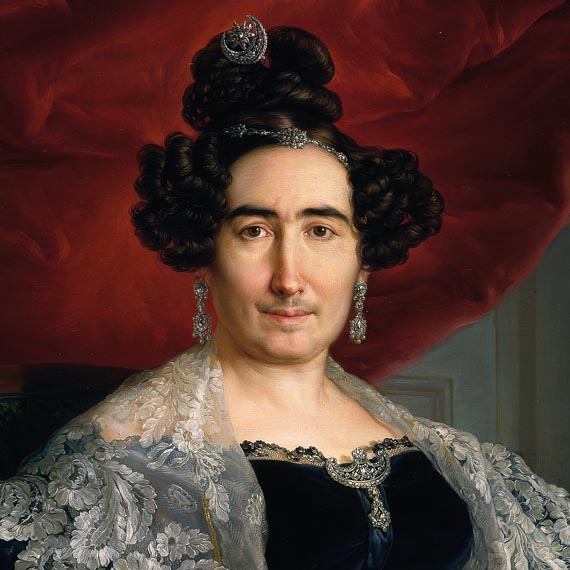
Vicente López Portaña’s technical skill and precise depictions made him a favourite painter to a society eager to show off their status. His attention to detail knows no bounds — so we can only hope that Mrs Delicado de Imaz was not vain. However, we can be thankful for the almost photographic depiction of the fabrics and jewellery.
‘The lady depicted here, around 50 years of age, is represented slightly greater than half-length, seated on a chair upholstered in green cloth, with a striking cashmere shawl of vivid colours lying on one of its arms. She is wearing a dark blue velvet dress with a lace mantilla covering her shoulders. Richly bejewelled, she wears a magnificent bracelet and a ring on her right hand, in which she is also holding a fan, while her gloved left hand rests on her lap. She wears her hair done up in the fashionable style called tres potencias (literally, ‘three powers’), with tight curls on the sides and a large topknot held in place with a magnificent pin shaped like a crescent moon and star, studded with diamonds, matching the chain on her forehead, her earrings and brooch. From the belt of her dress hangs the chain of a gold watch.’ 1
A set of several matching pieces, the parure became popular. A parure consisted of necklace, earrings, a breast ornament, two bracelets and a diadem. A demi-parure — a necklace, earrings and a brooch.


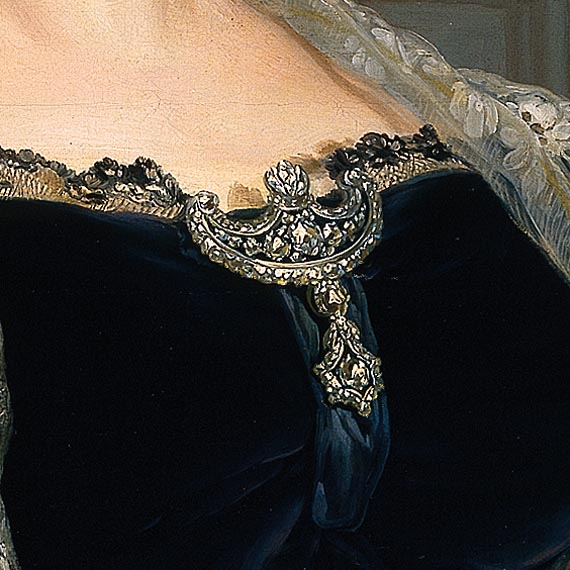
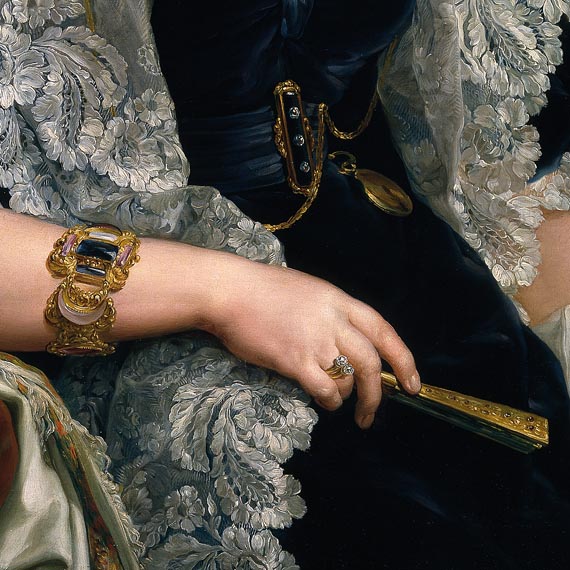
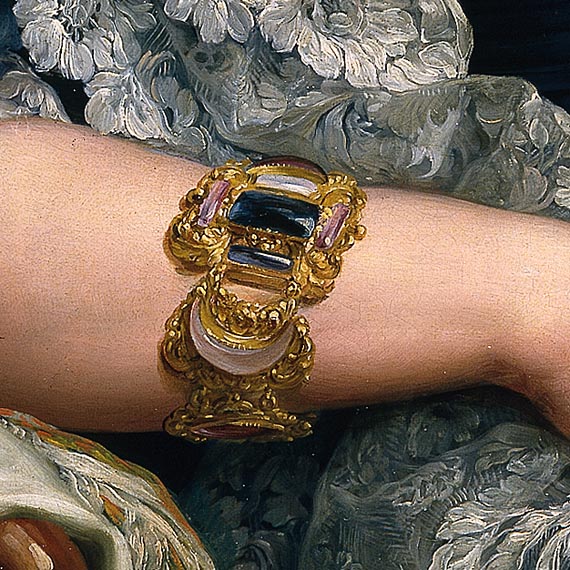
Mrs Delicado de Imaz wears a ‘Sevigné’ brooch — a style made popular by the marquise of Sevigné at the French court of Louis 14th — originally in the shape of a bow worn low on the bodice — but later this evolved to become more elaborate and sometimes suspending pearls or gems in the ‘girandole’ style.
Her bracelet shows a revival of rococo style and seems to be set with shaped and polished crystal — certainly paste or lead crystal was not a new invention — it had reached its peak in the 1700’s to meet the demands of a new middle class. The industrial revolution had brought constant material and technical innovations and by the 1820’s jewellery was being made by soldering together several stamped sheet gold components. Mrs Delicado de Imaz seems to be bridging both older and new trends in her jewellery.
Barbara Heath is a Brisbane-based jewellery designer
Endnote
1 You can read more about Mrs Delicado de Imaz by Jose Luis Diez in the illustrated exhibition catalogue Portrait of Spain: Masterpieces from the Prado.
Know Brisbane through the Collection / Read more about the Australian Collection / Subscribe to QAGOMA YouTube to go behind-the-scenes
Specially curated for the Queensland Art Gallery by the Museo Nacional del Prado, Madrid, ‘Portrait of Spain: Masterpieces from the Prado’ is the largest and most significant international loan the Prado has ever undertaken, and the first exhibition from their collection to be shown in the Southern Hemisphere / Queensland Art Gallery / 21 July – 4 November 2012
#QAGOMA


He could have been less realistic and more merciful if he didn’t paint the lady’s moustache.